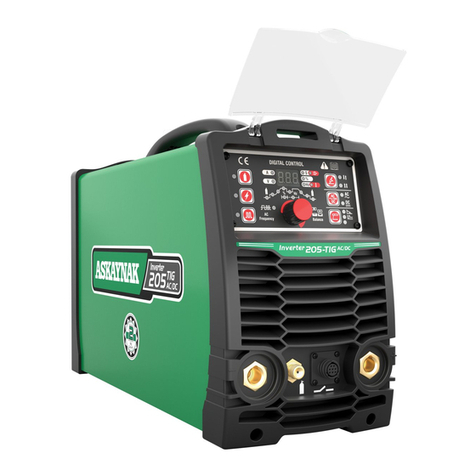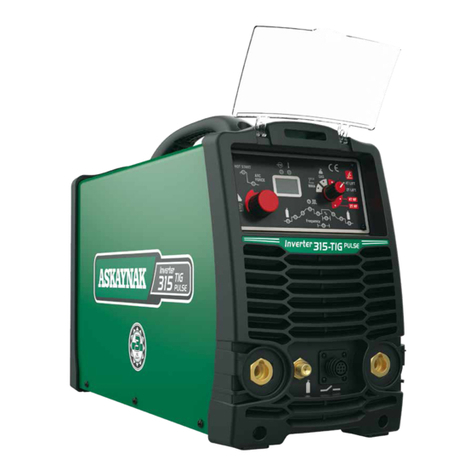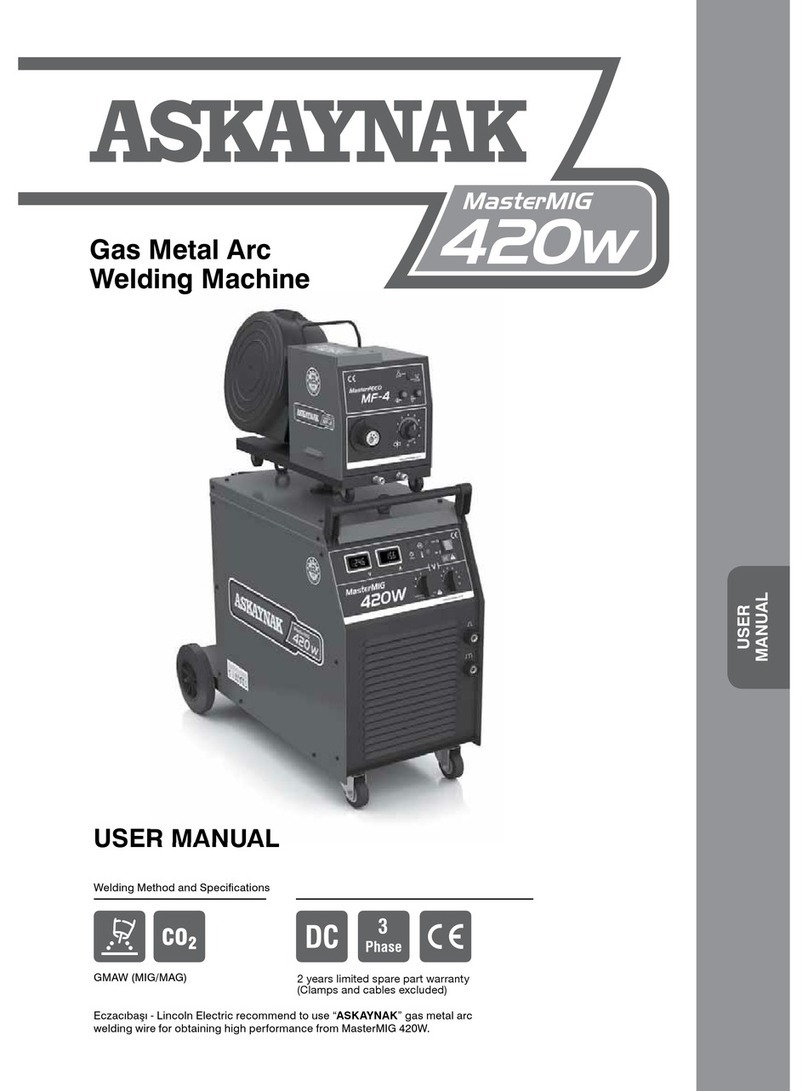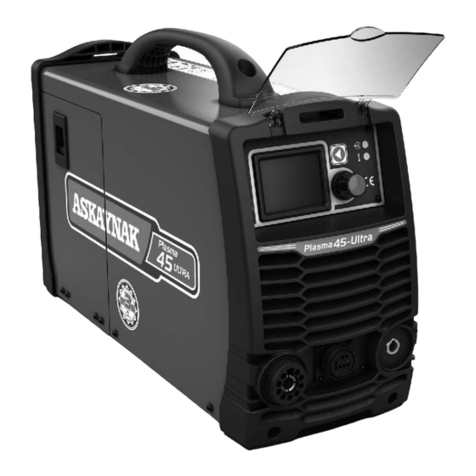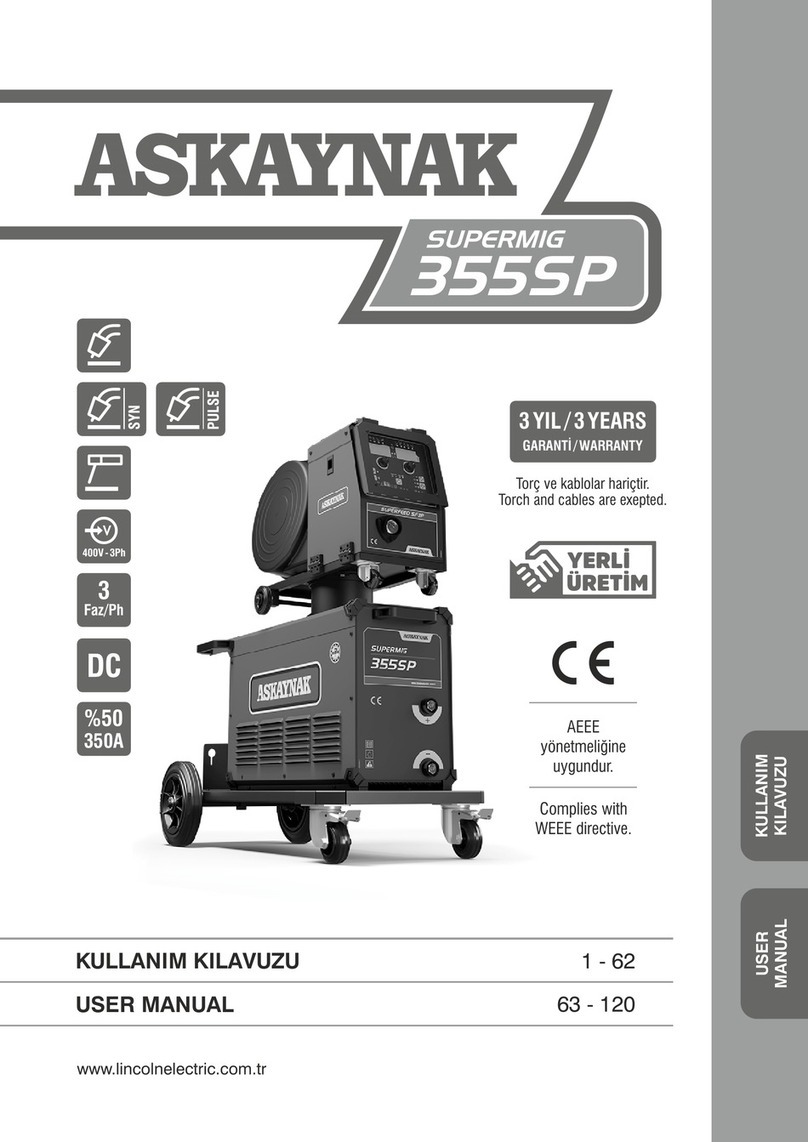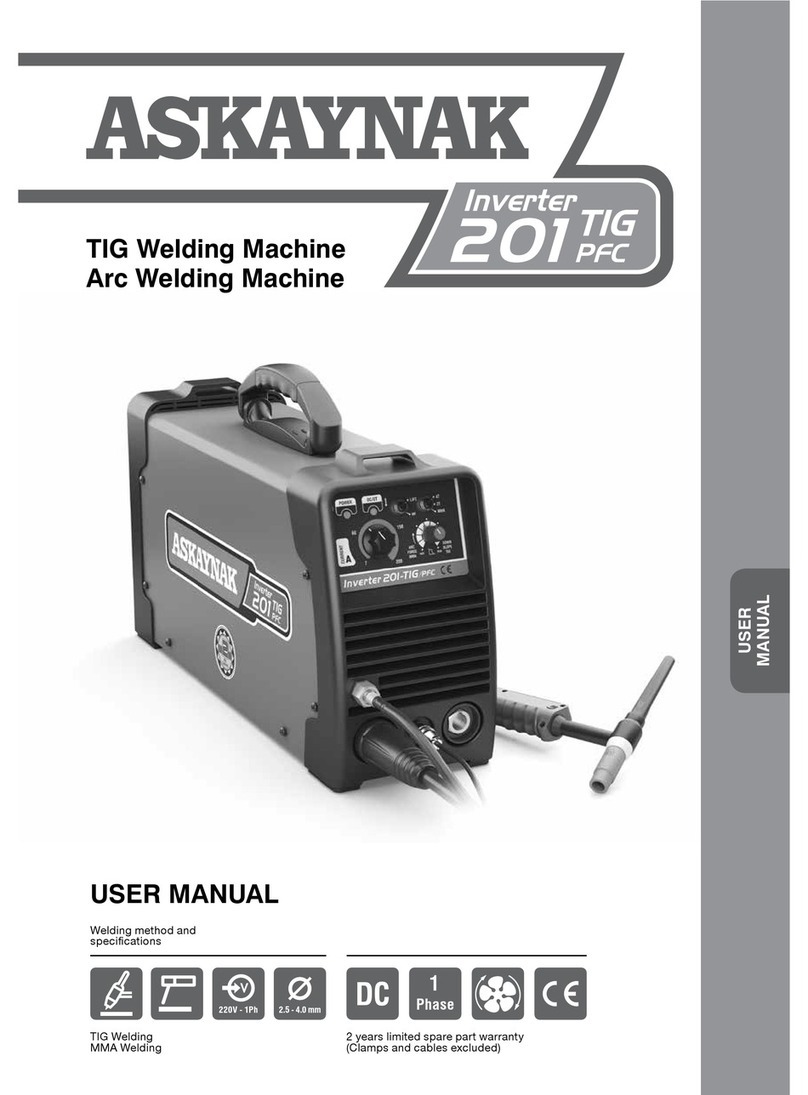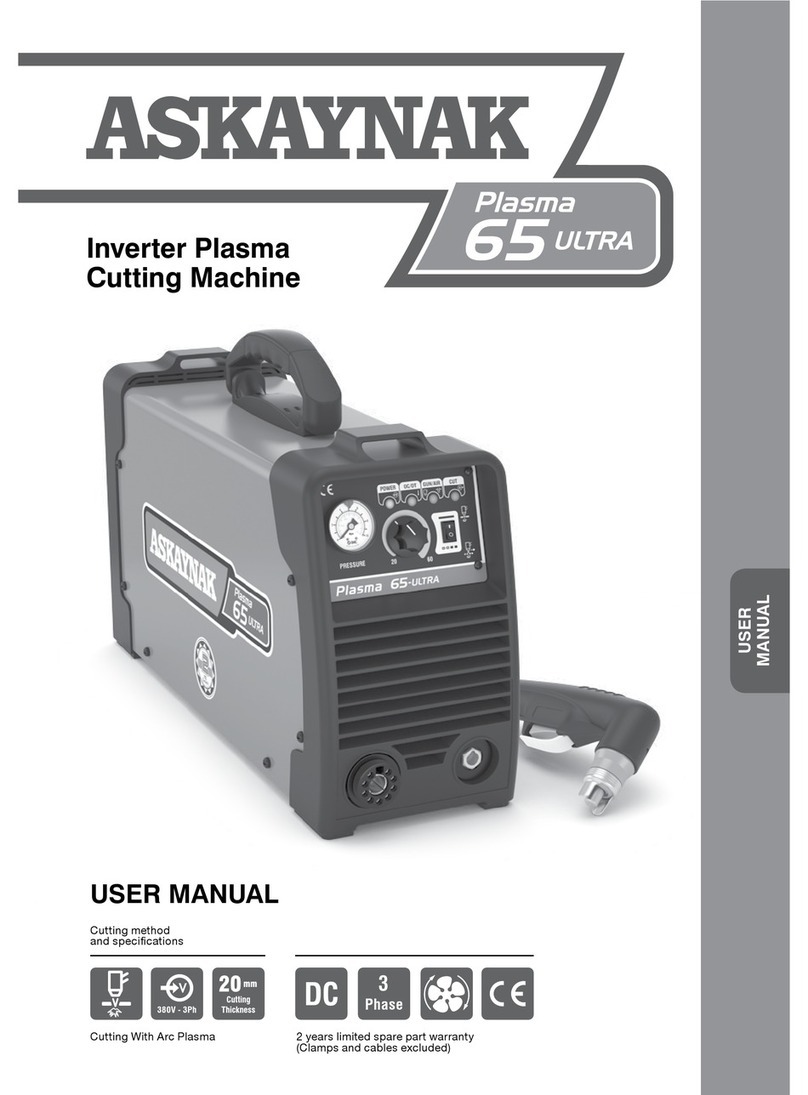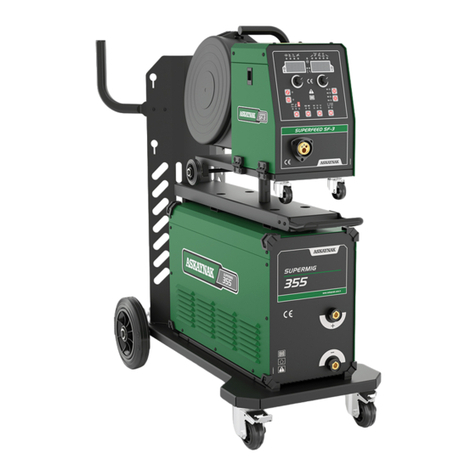EXTRA SAFETY MEASURES:
Applying the safety measures under certain circumstances may become difcult;
nonetheless, the rules set forth should be abided with. Keep your gloves dry and if that
becomes impossible, keep a spare pair with you.
Stand on a non-conducting material such as plywood, plastic mat etc. Insulate your body
from the welding piece.
If you have to carry out welding works with high possibility of electrical shock such as in
a moist environment, in wet clothing, grids or scaffolding on your knees or leaning out or,
where contact with the ground is prevented, prefer to use the machine types specied
below:
• Semi-automatic xed DC voltage machines,
• DC manual arc welding machines,
• Reduced voltage controlled AC welding machines.
The condition of the electrode handle and cables is very important. The plastic or ber
insulator on the handle prevents contact with live parts. Always check the condition of the
handle before operating the welding machine. Replace the old and worn out handles and
do not try to repair. Conduct the same checks on the cables as well and since replacing the
cable may be costly, repair them with a high-resistance heat shrink etc. Check the insulation
at all times before operating the machine.
If you feel an electrical shock, remember that this is a warning. In such a case, before
continuing with the work, check your working habits and work environment in terms of
electrical shock risks. In case of any abnormal situation, do not continue with welding
without taking the measures required. If you cannot identify the source of the problem, have
it checked by an authorized specialist.
PRECAUTIONS FOR THE OTHER PERSONS IN THE WORK AREA:
The cleanliness and order of the work area are very important for you and the other people
in the area both. Other welders or people walking around may step into your welding bath
accidentally or trip on the cables and fall inviting the risk of an electrical shock to you and
the other people around. Furthermore, the welding splashes may cause risk of burns to the
other people in the vicinity.
Segregating the welding site with a re-proof barrier could reduce the above risks.
Warn other people in the work area about using work safety equipment. In particular if
they have to work in a welding site, warn them about wearing re-resistant work outts,
work goggles, insulated shoes and gloves etc. remove the people, who do not heed your
warnings, from the work site.
If you are welding on a high place, use warning signs showing the risk of welding splashes
falling down on the people below.
Electromagnetic elds may be dangerous for the pace-makers.
Warn the people in the vicinity, regardless of welders or otherwise, regarding the above
and post warning signs. Tell such people that they should consult a doctor before entering
the welding area. The welding sites pose high risk of electrical shocks. Other people may
face the risk of an electrical shock by passing on a cable while working around. Do not use
un-insulated welding cables and pass the cables through insulated, plastic ducts where
possible.
Safety in Welding - 7
44
